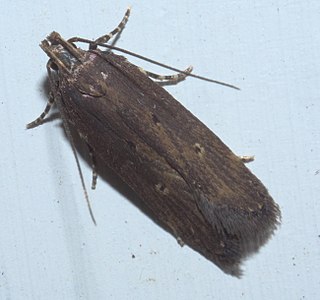Pleroma generally refers to the totality of divine powers. It is used in Christian theological contexts, especially in Gnosticism. The term also appears in the Epistle to the Colossians, which is traditionally attributed to Paul the Apostle. The word is used 17 times in the New Testament.

Tibouchina is a neotropical flowering plant genus in the family Melastomataceae. Species of this genus are subshrubs, shrubs or small trees and typically have purple flowers. They are native to Mexico, the Caribbean, and South America where they are found as far south as northern Argentina. Members of this genus are known as glory bushes, glory trees or princess flowers. The name Tibouchina is adapted from a Guianan indigenous name for a member of this genus. A systematic study in 2013 showed that as then circumscribed the genus was paraphyletic, and in 2019 the genus was split into a more narrowly circumscribed Tibouchina, two re-established genera Pleroma and Chaetogastra, and a new genus, Andesanthus.

Chionodes is a genus of moths of the family Gelechiidae. It is distributed throughout much of the world. The larvae of many species use the Douglas fir as a host plant.
Chionodes petalumensis is a species of moth in the family Gelechiidae. It is found in North America from southern British Columbia to California, Arizona and Colorado.

Pleroma raddianum, synonyms including Pleroma pulchrum(Cham.) Triana and Tibouchina pulchra, is a plant species in the family Melastomataceae.
Chionodes apolectella is a moth of the family Gelechiidae. It is found on Corsica and Sardinia.
Chionodes flavicorporella is a moth in the family Gelechiidae. It is found in North America, where it has been recorded from Alberta, Prince Edward Island, Manitoba, Ontario, Maine, Michigan, New York, West Virginia, Colorado, Montana, Wyoming and Yukon.

Chionodes discoocellella, the eyeringed chionodes moth, is a moth in the family Gelechiidae. It is found in the United States, where it has been recorded from Maine to South Dakota, Florida, Texas and Colorado.
Chionodes gilvomaculella is a moth in the family Gelechiidae. It is found in North America, where it has been recorded from Nova Scotia and southern Ontario to West Virginia and Ohio.

Chionodes obscurusella, the boxelder leafworm moth, is a moth in the family Gelechiidae. It is found in North America, where it has been recorded from Nova Scotia to Manitoba, south to North Carolina and Oklahoma.

Chionodes periculella is a moth in the family Gelechiidae. It is found in North America, where it has been recorded from British Columbia, Washington, California and Oregon.
Chionodes pinguicula is a moth in the family Gelechiidae. It is found in North America, where it has been recorded from Utah, Colorado, Texas, New Mexico, Arizona, Nevada and California.
Chionodes dryobathra is a moth in the family Gelechiidae. It is found in Colombia.
Chionodes concinna is a moth in the family Gelechiidae. It is found in Mexico (Guerrero).
Chionodes bufo is a moth in the family Gelechiidae. It is found in Mexico (Guerrero).
Chionodes cacoderma is a moth in the family Gelechiidae. It is found in Mexico (Guerrero).
Chionodes neptica is a moth in the family Gelechiidae. It is found in Mexico (Guerrero).
Chionodes salva is a moth in the family Gelechiidae. It is found in the West Indies.
Chionodes attonita is a moth in the family Gelechiidae. It is found in Colombia.





